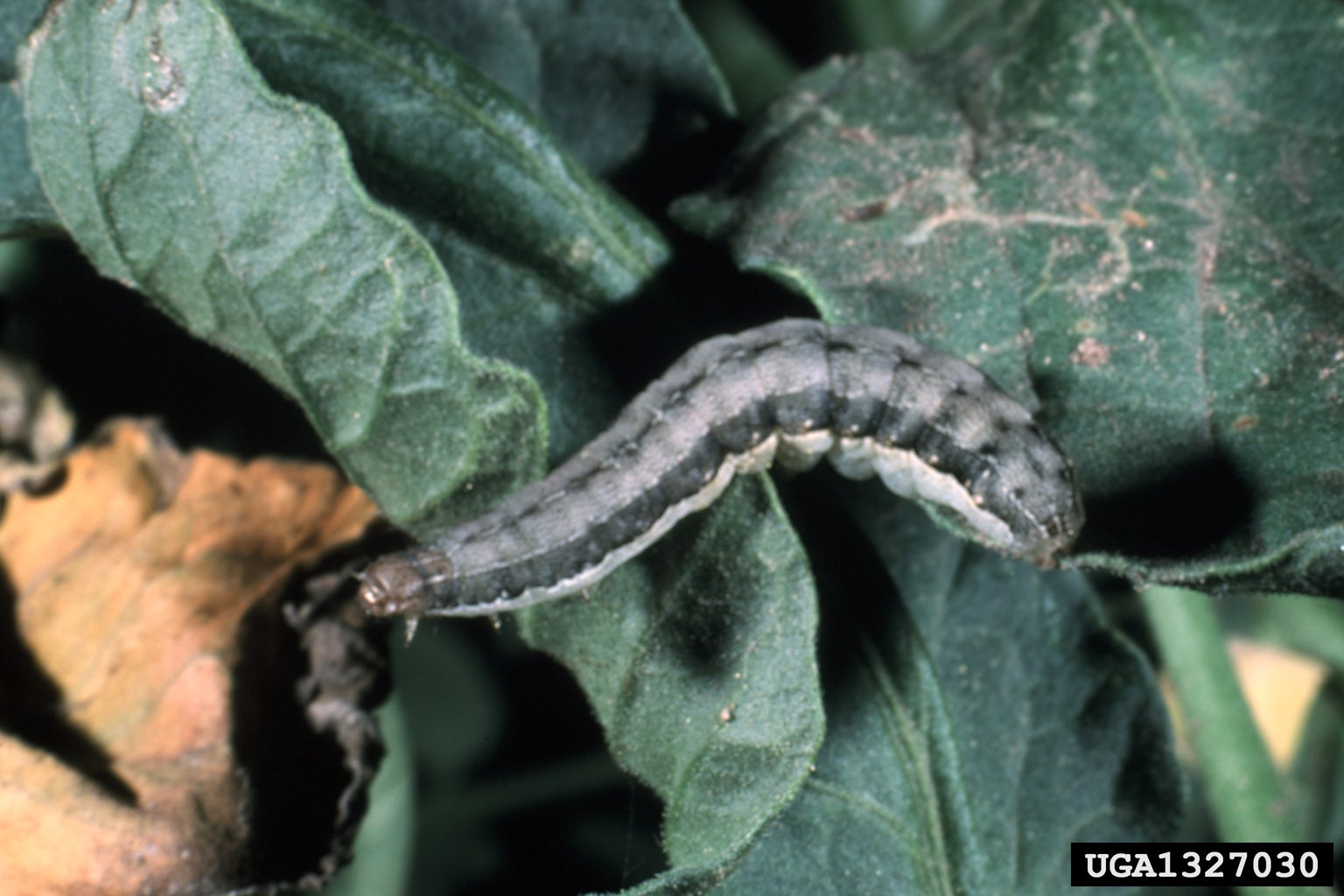What Are Armyworms: Information On Armyworm Control


Attracting moths and butterflies to the garden seems like a good idea, until those adults decide to lay their eggs where they've been merrily flying around, pollinating flowers. In about 10 days, caterpillar pests, like armyworms, appear out of nowhere, dead set on eating your garden to the last green nub. Armyworms in gardens are no fun, but if you keep a close eye on the activity among the veggies, you'll quickly have them under control.
What are Armyworms?
Armyworms are the 1 ½-inch long larvae of a very innocuous tan to brown moth common in gardens. These smooth-skinned larvae vary widely in color, from pale green to dark green-brown and black. Many bear long, orange, white or black stripes along their sides and have a yellow to orange head. They change colors as they mature, making identification tricky. These larvae feed primarily at night, in large groups, and prefer cereal grains like wheat or corn and grasses. However, they've been known to consume any of the following crops when other foods are scarce:
Armyworms feed on the tender new growth of their host plants, sometimes consuming whole plants before moving in groups to the next plant stand. Because of the speed at which they move, armyworm plant damage can be seriously devastating to gardens.
How to Control Armyworms
Armyworm control can be difficult if your armyworms are transient, but if you catch them early, while they're relatively immobile, you may stop the problem before it begins. In the future, keep the lawn neatly trimmed to reduce areas where armyworm moths may choose to lay their eggs - this also eliminates hiding spots for maturing caterpillars. Check the garden at night with a flashlight for signs of armyworms. If you see any feeding, immediately pluck them from the plants and drop them in a bucket of soapy water. Hand-picking can be an effective control, provided you check for caterpillars each night until you no longer find any larvae after a thorough search. If this simply isn't possible, spraying your plants with Bacillus thuringiensis or spinosad will provide some level of protection. Chemicals are most effective against young larvae and must be reapplied frequently, making them a less reliable method of caterpillar control, but if armyworms are severe, they can be a more efficient option.
Gardening tips, videos, info and more delivered right to your inbox!
Sign up for the Gardening Know How newsletter today and receive a free copy of our e-book "How to Grow Delicious Tomatoes".

Kristi Waterworth was a regular contributor to Gardening Know How for many years, answering countless queries on plant pests and diseases.
-
 12 Lush Alternatives To A Lawn For Sustainable Spaces
12 Lush Alternatives To A Lawn For Sustainable SpacesAlternatives to a lawn are beautiful and also beneficial to your local ecosystem and its pollinators. Explore our top picks for plants to replace grass.
By Tonya Barnett
-
 Types Of Tomatoes Explained: Explore The Many Wonderful Shapes, Colors, Flavors, & Best Uses
Types Of Tomatoes Explained: Explore The Many Wonderful Shapes, Colors, Flavors, & Best UsesThe world of tomato varieties is vast and fascinating. Learn about the key types to grow in your garden, tailored to your preferences and space.
By Amy Grant